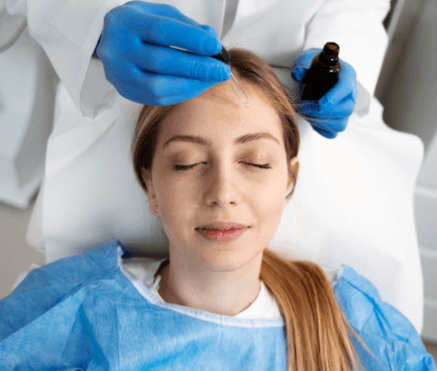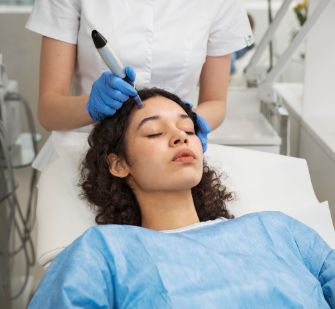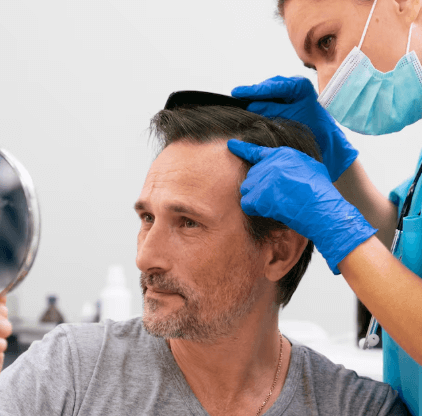Pico laser treatment is one of the most effective ways to address pigmentation problems such as melasma, sunspots, freckles, and post-inflammatory hyperpigmentation (PIH). While the procedure is minimally invasive and typically has little downtime, aftercare is crucial for maximizing results, minimizing side effects, and preventing the return of unwanted pigmentation.
This comprehensive guide covers all the do’s and don’ts you should follow after a Pico laser session to ensure a smooth recovery and optimal results.
✅ Aftercare Do’s
1. Apply Broad-Spectrum Sunscreen Daily
- Why: UV exposure is the number one cause of pigmentation recurrence after laser treatments.
- What to use: SPF 30 or higher, preferably with zinc oxide or titanium dioxide (mineral sunscreens).
- When: Apply every morning, and reapply every 2–3 hours if you’re outdoors.
2. Keep Skin Moisturized
- Why: Hydrated skin heals faster and minimizes flakiness or irritation.
- What to use: Look for moisturizers with hyaluronic acid, ceramides, panthenol, or Centella Asiatica.
- Tip: Apply a generous layer immediately after cleansing and throughout the day if needed.
3. Use Gentle Cleansers
- Why: Harsh cleansers can disrupt the skin barrier and slow healing.
- What to use: A non-foaming, fragrance-free cleanser with a neutral pH (e.g., CeraVe Hydrating Cleanser, La Roche-Posay Toleriane Cleanser).
4. Avoid Heat Exposure
- Why: Heat can trigger inflammation and worsen pigmentation (especially melasma).
- Avoid: Hot showers, steam rooms, saunas, hot yoga, and intense exercise for 48–72 hours post-treatment.
5. Follow Your Doctor’s Instructions
- Why: Your provider may recommend specific serums, topicals, or timing based on your skin type and the laser intensity used.
- Include: Any prescribed antibiotic creams or steroid ointments to prevent infection and control redness.
6. Sleep With Your Head Elevated (First 1–2 Nights)
- Why: Helps reduce minor swelling and fluid retention.
7. Be Patient
- Why: Pigment often darkens slightly before flaking off or fading, which is a normal part of the healing process.
- Timeline: Most people see improvement within 7–14 days, with full results visible in a few weeks.
🚫 Aftercare Don’ts
1. Don’t Pick, Scratch, or Rub Your Skin
- Why: This can cause scarring, delayed healing, or post-inflammatory hyperpigmentation.
- Tip: If dryness or flaking occurs, apply a hydrating serum or gentle emollient. Let dead skin shed naturally.
2. Avoid Exfoliants and Active Ingredients Initially
- Why: Ingredients like retinoids, AHAs/BHAs, benzoyl peroxide, and vitamin C can irritate healing skin.
- When to restart: Wait at least 5–7 days, or until redness subsides and skin feels back to normal.
3. Don’t Use Makeup Right Away
- Why: Foundations, powders, and concealers can clog pores or introduce bacteria.
- When safe: Typically 24–48 hours after treatment, but confirm with your provider.
4. Don’t Overcleanse or Overwash
- Why: Too much washing strips the skin of protective oils and slows healing.
- Limit: Cleanse twice daily with lukewarm water and pat dry—don’t scrub.
5. Avoid Alcohol-Based Products
- Why: These can sting, dry out the skin, and compromise healing.
- Check labels for: SD alcohol, denatured alcohol, or ethanol.
6. Don’t Skip Follow-Up Treatments
- Why: Most pigmentation concerns require a series of sessions (typically 2–6 spaced 2–4 weeks apart).
- Follow-up helps: Ensure consistent progress and long-term results.
🗓️ Sample Aftercare Timeline
| Day | Skin Status | Recommended Action |
|---|---|---|
| 0–1 | Redness, warmth | Cool compresses, SPF, avoid heat |
| 2–3 | Slight flaking | Use moisturizer, avoid exfoliants |
| 4–7 | Healing phase | Resume mild actives (niacinamide), keep moisturizing |
| 7+ | Normalizing | Resume gentle vitamin C or retinol (if tolerated), continue sun protection |
🧴 Best Aftercare Products (Dermatologist-Recommended)
| Category | Recommended Products |
|---|---|
| Gentle Cleanser | CeraVe Hydrating Cleanser, La Roche-Posay Toleriane |
| Moisturizer | Vanicream, Avene Cicalfate, Bioderma Cicabio |
| Soothing Serum | SkinCeuticals Phyto Corrective Gel, Dr. Jart+ Cicapair Serum |
| Sunscreen | EltaMD UV Clear, ISDIN Fusion Water, La Roche-Posay Anthelios |
| Hydration Boost | Neutrogena Hydro Boost Gel, Vichy Mineral 89 |




